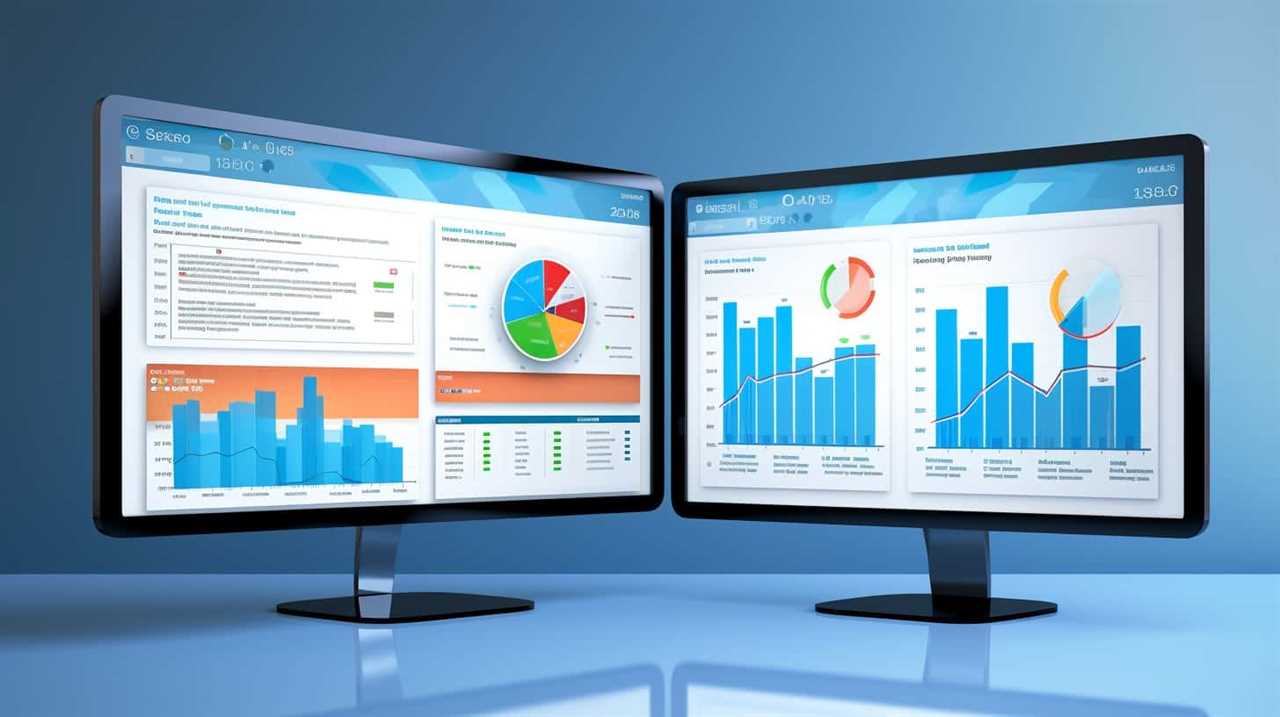Are you aiming to establish your brand as a top performer in your industry? Wondering how to improve your search engine rankings and boost organic traffic to your site? Look no further!
In this article, we’ll explore the cornerstone of topical authority: content quality. We’ll dive into why it matters, how it builds trust and credibility, and the long-term benefits it brings.
Get ready to take your content game to the next level and achieve mastery in your niche!
Key Takeaways
- Content quality is essential for establishing topical authority and building trust with the target audience.
- Demonstrating expertise and credibility through consistently delivering high-quality content is crucial for long-term success.
- Engaging and retaining the audience can be achieved through active interaction, personalized content, and fostering loyalty.
- Boosting search engine rankings and driving organic traffic and conversions require prioritizing content quality, user experience, and effective keyword optimization.
The Importance of Content Quality
Content quality is crucial for establishing topical authority. When it comes to creating content that resonates with our audience, two key factors come into play: content relevance and content engagement.

First and foremost, content must be relevant to the topic at hand. It should provide valuable information and insights that directly address the needs and interests of our target audience. By doing so, we establish ourselves as knowledgeable and authoritative sources in our field.
However, relevance alone isn’t enough. To truly capture our audience’s attention, our content must also be engaging. This means using captivating headlines, incorporating multimedia elements, and crafting compelling narratives that keep readers hooked from start to finish.
Building Trust and Credibility
When it comes to building trust and credibility, there are a few key points to keep in mind.
Firstly, expertise breeds trust. By showcasing our knowledge and experience in a particular topic, we establish ourselves as reliable sources of information.

Secondly, consistency is crucial for building credibility. By consistently delivering high-quality content, we show our audience that we can be relied upon to provide valuable and accurate information.
Lastly, quality is the driving force behind audience connection. When our content is well-researched, well-written, and provides genuine value, it resonates with our audience and helps us build a stronger connection with them.
Expertise Breeds Trust
We believe that expertise is the key to building trust and credibility with our audience. When it comes to establishing credibility, fostering expertise is crucial. Here’s why:
- In-depth knowledge: By demonstrating our expertise on a particular subject, we show our audience that we have a deep understanding of the topic. This knowledge allows us to provide accurate and valuable information, making our content trustworthy.
- Authority and confidence: When we showcase our expertise, our audience perceives us as authorities in the field. This instills confidence in our audience, as they know they can rely on us for reliable and authoritative content.
- Consistency: Consistently producing high-quality content that showcases our expertise reinforces our credibility and builds trust over time. Our audience will come to recognize us as a reliable source of information.
- Industry recognition: By consistently demonstrating our expertise, we can gain recognition within our industry. This recognition further enhances our credibility and establishes us as trusted experts.
By focusing on expertise, we can build trust and credibility with our audience, paving the way for long-term success.

Now, let’s explore how consistency builds credibility.
Consistency Builds Credibility
By consistently showcasing our expertise, our audience recognizes us as trusted authorities in the field, which in turn strengthens our credibility and builds trust.
Building a brand and establishing authority requires a consistent approach to delivering high-quality content. When we consistently provide valuable and reliable information, our audience becomes more likely to rely on us for their needs.
Consistency in our content not only demonstrates our commitment to our audience but also shows that we’re knowledgeable and dependable. It allows us to build a reputation as experts in our field, which helps to establish our authority and credibility.

Quality Drives Audience Connection
Our consistent delivery of high-quality content fosters a strong connection with our audience, establishing trust and credibility. Building an emotional connection with our readers is crucial to creating a loyal following. Through authentic storytelling, we share experiences, perspectives, and insights that resonate with our audience on a deep level. This emotional connection allows us to tap into their emotions, making our content more memorable and impactful.
Here are four ways in which quality content drives audience connection:
- Captivating narratives: By telling compelling stories, we engage our audience’s emotions and keep them hooked from start to finish.
- Relatable experiences: Sharing relatable experiences helps our audience feel understood and builds a sense of community.
- Thought-provoking insights: Offering unique and valuable insights sparks curiosity and encourages further engagement with our content.
- Transparent communication: Being open and transparent fosters trust and credibility, making our audience more likely to connect with us on a deeper level.
Establishing Expertise in Your Niche
When it comes to establishing expertise in your niche, there are a few key points to consider.
First, building niche authority is crucial in order to position yourself as a go-to resource in your industry.

Second, showcasing your expertise through high-quality content is essential for establishing credibility with your audience.
And finally, consistently delivering valuable and insightful information will help solidify your position as an expert in your field.
Building Niche Authority
We strive to establish our expertise in our niche by immersing ourselves in the industry and constantly learning. Building niche authority is crucial for establishing industry credibility and becoming a trusted source of information.
Here are four key steps to help you build niche authority:

- Identify your niche: Determine the specific area within your industry where you want to establish yourself as an expert. This will allow you to focus your efforts and provide targeted, valuable content.
- Research extensively: Stay up-to-date with the latest trends, developments, and best practices in your niche. Read industry publications, attend conferences, and engage with thought leaders in your field.
- Create valuable content: Share your knowledge and insights through high-quality content such as blog posts, articles, videos, and podcasts. Provide actionable advice, in-depth analysis, and unique perspectives that add value to your audience.
- Engage with your audience: Actively interact with your audience through social media, online forums, and comments sections. Respond to their questions, provide helpful solutions, and foster meaningful conversations. This will help you build a loyal following and establish yourself as an authority in your niche.
Expertise Through Content
Through creating high-quality content that showcases our expertise and addresses the needs of our target audience, we establish ourselves as trusted authorities in our niche. Effective communication is the key to building authority through our content. By consistently delivering valuable and insightful information, we demonstrate our knowledge and understanding of the industry to our audience. This helps to build trust and credibility, positioning us as the go-to resource in our niche.
To illustrate the importance of expertise through content, here is a table showcasing the benefits of establishing authority in your niche:
| Benefits of Establishing Authority in Your Niche |
|---|
| Increased credibility and trust |
| Greater visibility and recognition |
| Attracting a loyal and engaged audience |
| Opportunities for collaborations and partnerships |
| Enhanced reputation and industry influence |
Establishing Industry Credibility
To establish industry credibility and expertise in your niche, it’s crucial to consistently deliver high-quality content that showcases your knowledge and understanding of the industry. By doing so, you can position yourself as a thought leader and gain the trust of your audience.
Here are four key strategies to help you establish industry credibility:

- Stay up-to-date: Keep yourself informed about the latest trends, news, and developments in your industry. This will demonstrate that you’re knowledgeable and stay ahead of the curve.
- Share original insights: Offer unique perspectives and insights that add value to your audience. This will showcase your expertise and set you apart from others in your niche.
- Engage with the community: Actively participate in industry forums, social media discussions, and conferences. This will help you build relationships, gain visibility, and establish yourself as an expert.
- Provide evidence and examples: Support your claims with data, case studies, and real-life examples. This will enhance your credibility and show that you have practical experience.
Boosting Search Engine Rankings
As marketers, our goal is to improve our search engine rankings by focusing on the quality of our content. Boosting search engine rankings is crucial for increasing visibility and attracting more organic traffic to our websites.
One way to achieve this is through content optimization. By optimizing our content, we can ensure that it’s relevant, valuable, and easily discoverable by search engines. This involves conducting keyword research, incorporating keywords naturally into our content, and optimizing meta tags and headers.
Additionally, we should prioritize user experience by creating engaging and well-structured content that keeps readers on our pages for longer. By consistently delivering high-quality content that meets the needs of our target audience, we can boost our search engine rankings and establish ourselves as authoritative sources in our industry.
Engaging and Retaining Your Audience
One way we can continue to engage and retain our audience is by creating compelling and interactive content. By building a community and fostering loyalty, we can cultivate a dedicated following that keeps coming back for more. Here are four strategies to achieve this:

- Encourage audience participation: Engage with your audience by encouraging them to leave comments, ask questions, and share their own experiences. This creates a sense of community and shows that you value their input.
- Offer exclusive content: Provide your audience with exclusive content that they can’t find anywhere else. This could be in the form of behind-the-scenes footage, interviews with experts, or access to special events. This makes your audience feel special and encourages them to stay loyal.
- Utilize interactive elements: Incorporate interactive elements into your content, such as quizzes, polls, or interactive videos. This not only keeps your audience engaged, but also allows them to actively participate in the content.
- Personalize the experience: Tailor your content to the specific interests and needs of your audience. Use data and analytics to understand what resonates with them and deliver content that’s relevant and valuable.
Creating Shareable and Link-Worthy Content
When it comes to creating shareable and link-worthy content, there are a few key points to consider.
First, the impact of engaging headlines can’t be underestimated – they’re the gateway to attracting readers and encouraging them to click and share.
Additionally, incorporating visual content can provide a significant advantage, as it captures attention and enhances the overall user experience.
Lastly, keeping up with trending topics allows you to tap into the current conversations and increase the chances of your content being shared and linked to.

Impact of Engaging Headlines
In the article, we explore the impact of engaging headlines in creating shareable and link-worthy content. A well-crafted headline can make all the difference in capturing the attention of readers and enticing them to click through. Here are four reasons why engaging headlines are essential for content success:
- Emotional impact: Engaging headlines tap into readers’ emotions, whether it’s curiosity, excitement, or even fear. By evoking strong emotions, headlines can compel readers to dive deeper into the content.
- Increased click-through rates: A catchy headline can significantly improve click-through rates, as it entices readers to take action and explore the full article. With higher click-through rates, your content has a greater chance of being shared and linked to by others.
- Higher social media shares: Engaging headlines are more likely to be shared on social media platforms, increasing your content’s visibility and reach. When users find a headline intriguing or impactful, they’re more inclined to share it with their network, driving more traffic to your content.
- Improved search engine optimization (SEO): Engaging headlines not only attract readers but also search engines. By incorporating relevant keywords and creating compelling headlines, your content becomes more discoverable and ranks higher in search results.
As we delve into the impact of engaging headlines, it’s important to consider the advantages of visual content in capturing readers’ attention and enhancing the overall user experience.
Visual Content Advantages
Visual content offers numerous advantages in creating shareable and link-worthy content. With the rise of social media and the increasing demand for visually appealing content, incorporating visual elements into your content strategy is essential.
Visual storytelling allows you to convey complex information in a way that’s easily digestible and engaging for your audience. Infographic design, in particular, can be a powerful tool for presenting data and statistics in a visually compelling manner. By using eye-catching graphics, charts, and illustrations, you can capture your audience’s attention and encourage them to share and link to your content.

In fact, studies have shown that content with visuals receives significantly more shares and backlinks than text-only content. By leveraging the power of visual content, you can enhance the reach and impact of your content, establishing your brand as an authority in your industry.
Now, let’s explore how incorporating trending topics can further boost your content strategy.
Incorporating Trending Topics
We frequently incorporate trending topics into our content strategy to create shareable and link-worthy content. By staying up to date with current trends, we’re able to maximize the impact of our content and attract a wider audience.
Here are four ways we incorporate current trends into our content strategy:

- Monitoring social media: We keep a close eye on popular hashtags, trending topics, and viral content on platforms like Twitter, Instagram, and TikTok. This allows us to spot emerging trends and create content that aligns with the interests of our target audience.
- Conducting keyword research: We use tools like Google Trends and keyword research tools to identify the most popular and relevant topics in our industry. By incorporating these keywords into our content, we increase the chances of ranking higher in search engine results and attracting organic traffic.
- Engaging with our audience: We actively encourage our audience to share their thoughts, opinions, and experiences related to current trends. This not only helps us understand their interests and preferences but also provides valuable insights for creating content that resonates with them.
- Collaborating with influencers: We collaborate with influencers and thought leaders in our industry to leverage their expertise and reach. By featuring them in our content or partnering with them for campaigns, we tap into their existing audience and boost the visibility and shareability of our content.
Enhancing User Experience on Your Website
Our website aims to enhance user experience by implementing various strategies and features. Two key elements in improving user experience are optimizing page speed and improving navigation. By optimizing page speed, we ensure that our website loads quickly, reducing waiting time for users and improving their overall experience. This can be achieved through techniques such as optimizing images, minifying code, and utilizing caching. Additionally, improving navigation involves creating a clear and intuitive menu structure, utilizing breadcrumbs, and implementing search functionality, making it easier for users to find the information they are looking for. To provide a clearer picture, here is a table summarizing these strategies:
| Strategies to Enhance User Experience |
|---|
| Optimize Page Speed |
| Improve Navigation |
Leveraging the Power of Social Media
The integration of social media enhances engagement and amplifies the reach of our content, bolstering our topical authority. Leveraging the power of social media is crucial in maximizing our social media reach.
Here are four ways we can effectively leverage social media to strengthen our topical authority:
- Engage with social influencers: Collaborating with influencers who have a strong following in our niche can help us expand our reach and gain credibility within our target audience.
- Create shareable content: By producing high-quality and valuable content, we increase the likelihood of it being shared across social media platforms. This not only increases our visibility but also establishes us as a trusted source of information.
- Utilize hashtags strategically: Using relevant and popular hashtags in our social media posts can help us reach a wider audience and increase the visibility of our content.
- Encourage user-generated content: By encouraging our audience to create and share content related to our brand, we not only increase engagement but also tap into the power of user advocacy, which can significantly boost our social media reach.
Driving Organic Traffic to Your Site
To drive organic traffic to any site, search engine optimization plays a crucial role in improving visibility and attracting relevant visitors. Effective keyword research is a fundamental aspect of SEO that helps identify the terms and phrases users are searching for. By incorporating these keywords strategically into your website’s content, meta tags, and headers, you can increase your chances of ranking higher in search engine results pages (SERPs).

Another important factor in driving organic traffic is optimizing your website for mobile devices. With the increasing use of smartphones and tablets, it’s essential to ensure that your site is mobile-friendly. This means having a responsive design that adapts to different screen sizes and loads quickly on mobile devices. Mobile optimization not only improves user experience but also helps search engines understand and rank your site better.
Generating Leads and Conversions
We can generate leads and conversions by nurturing meaningful connections with our target audience through high-quality content. Here are four key strategies for lead nurturing and conversion optimization:
- Personalization: Tailor your content to meet the specific needs and interests of your target audience. Use data and analytics to understand their preferences and deliver personalized experiences.
- Education and Value: Provide valuable information and resources that address your audience’s pain points and challenges. Position yourself as an expert in your industry and build trust with your audience.
- Call-to-Action: Clearly define the next steps you want your audience to take. Use compelling and persuasive language to encourage them to take action, whether it’s signing up for a newsletter, downloading a whitepaper, or making a purchase.
- Follow-up and Engagement: Once you’ve captured leads, maintain regular communication to nurture relationships and keep your brand top of mind. Engage with your audience through email campaigns, social media interactions, and personalized messaging.
Gaining Competitive Advantage
One way to gain a competitive advantage is by consistently delivering high-quality content that engages and resonates with our target audience.
By doing so, we can position ourselves strategically in the market and increase our chances of gaining market dominance.

When we consistently produce content that’s informative, engaging, and structured, we establish ourselves as a reliable source of information and expertise in our industry.
This helps us build trust with our audience and differentiate ourselves from our competitors.
By focusing on content quality, we can attract and retain a loyal following, which can lead to increased brand visibility, customer loyalty, and ultimately, business growth.
In today’s competitive landscape, strategic positioning through high-quality content is crucial for staying ahead of the competition and achieving long-term success.

Sustaining Long-term Success in Your Industry
In order to sustain long-term success in our industry, it’s essential to consistently deliver high-quality content. By doing so, we can achieve sustainable growth and establish ourselves as industry leaders. Here are four key reasons why content quality plays a crucial role in maintaining industry dominance:
- Building trust and credibility: High-quality content helps us gain the trust of our audience and establishes us as a reliable source of information.
- Attracting and retaining customers: When we consistently provide valuable content, we attract new customers and retain existing ones, leading to long-term success.
- Enhancing brand reputation: Delivering high-quality content positions us as experts in our field, boosting our brand reputation and attracting more opportunities.
- Staying ahead of the competition: By consistently producing exceptional content, we can differentiate ourselves from competitors and maintain a competitive advantage.
Frequently Asked Questions
How Can I Measure the Quality of My Content?
To measure content quality, we use metrics and analysis. User feedback is vital in assessing content quality. By examining engagement, readability, and relevance, we can determine if our content meets the highest standards.
What Are Some Strategies for Improving Trust and Credibility Through Content Quality?
Improving trust and credibility through content quality involves various strategies. By building authority through well-researched and informative content, we establish trust with our audience. High-quality content is the cornerstone of establishing credibility in our field.
Are There Any Specific Techniques or Best Practices for Establishing Expertise in a Particular Niche?
Building authority in a niche requires specific techniques. We’ve found that establishing expertise is crucial. By consistently producing high-quality content and demonstrating deep knowledge, we can gain trust and credibility with our audience.

Can You Provide Tips for Creating Content That Is Both Shareable and Link-Worthy?
Creating viral content and crafting compelling stories are key to creating shareable and link-worthy content. By understanding what resonates with our audience and delivering valuable insights, we can establish ourselves as authorities in our niche.
What Are Some Effective Ways to Enhance User Experience on a Website Through Content Quality?
Improving engagement and increasing conversions can be achieved by enhancing user experience through content quality. By providing valuable, relevant, and well-structured information, we can captivate visitors and encourage them to take desired actions on our website.
Conclusion
In conclusion, content quality isn’t just a nice-to-have; it’s the cornerstone of topical authority. It builds trust, establishes expertise, boosts search engine rankings, engages and retains your audience, drives organic traffic, generates leads and conversions, and gives you a competitive advantage.
But the true power of quality content lies in its ability to sustain long-term success in your industry. So, invest in creating valuable, well-crafted content that leaves your audience craving for more. The possibilities are endless.









